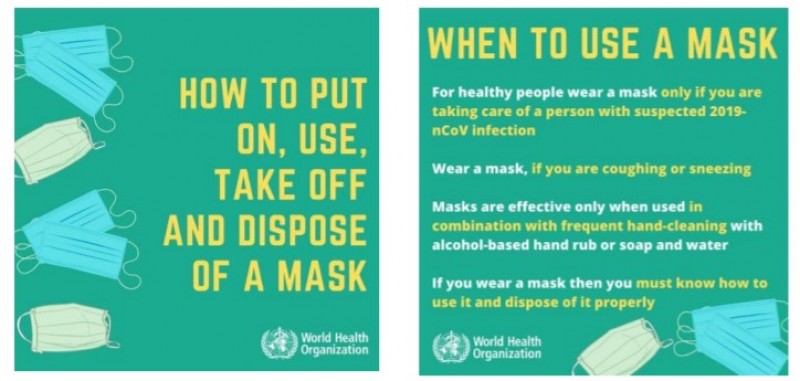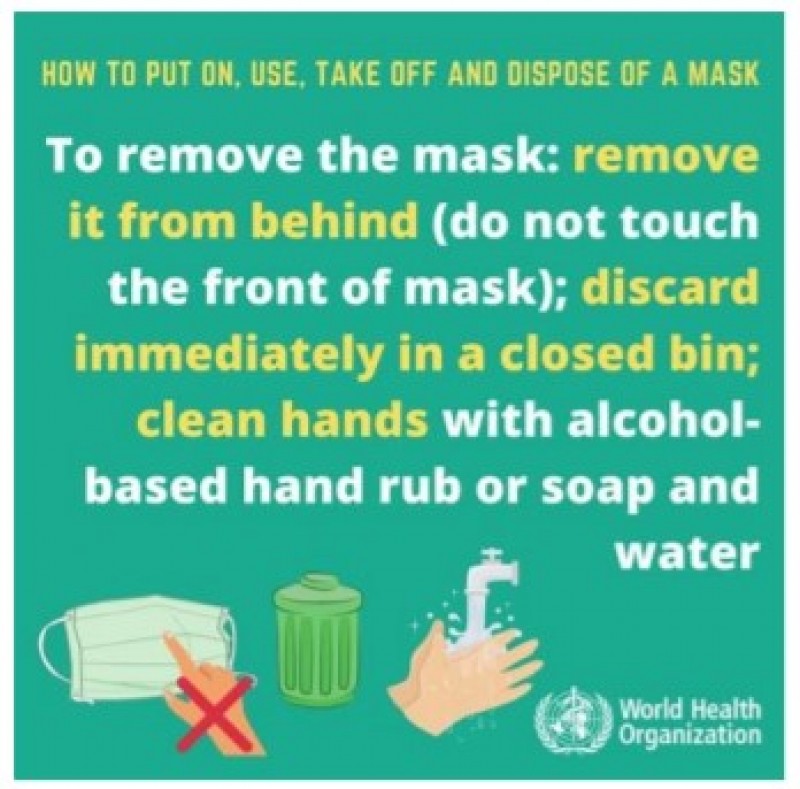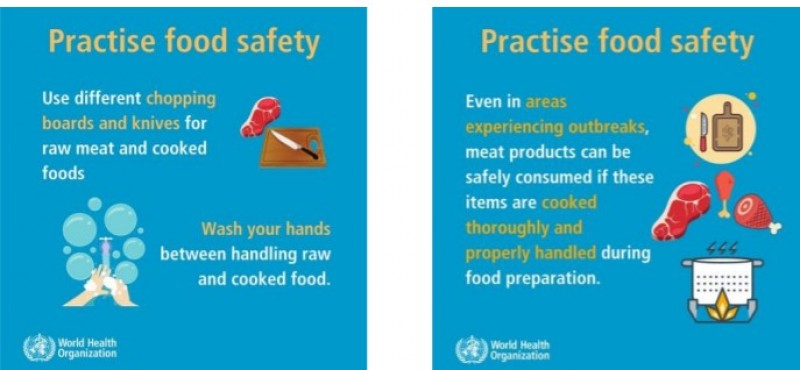Preface
At the end of the year 2019 an outbreak with a newly discovered coronavirus was reported
in the Hubei province in China. From there, the virus spread to several countries worldwide.
As of March 2nd approximate 89300 cases with about 3048 confirmed deaths have been reported. The largest number of about 80000 cases has been reported from mainland China.
Other countries, which have been affected with more than 100 confirmed cases, are South
Korea, Japan, Iran, Italy, Germany, Singapore and France. It is likely that the virus will spread
further and impact the Shipping Industry in various ways.
This Contingency Plan aims to provide general guidelines and recommendations for the
Crews on board of our vessels. Everything mentioned hereafter is in compliance with the official guidelines from the WHO.
As the outlook is uncertain and the situation changes quickly, the Company monitors the development and revise/amend this plan as necessary.
Content
1. What is a coronavirus?
2. What is COVID-19?
3. What are the symptoms of COVID-19?
4. How does COVID-19 spread?
5. Protection Measures
5.1. General
5.2. Equipment on board
5.3. Face masks and how to correctly use them
5.4. Code of Conduct
5.5. Single Access Point
5.6. SARS-CoV-2 Rapid Antigen Tests
6. Food Safety
7. What to do in case there is a suspected case on board?
8. Is there a vaccine, drug or treatment against COVID-19?
9. COVID-19 Emergency Telephone Number
10. Closing words
Annex I - Visitor Placard
Annex II - Passenger Pre-boarding Self-Declaration
1. What is a coronavirus?
Coronaviruses are a large family of viruses which may cause illness in animals or humans. In
humans, several coronaviruses are known to cause respiratory infections ranging from the
common cold to more severe diseases such as Middle East Respiratory Syndrome (MERS)
and Severe Acute Respiratory Syndrome (SARS). The most recently discovered coronavirus
causes coronavirus disease COVID-19.
2. What is COVID-19?
COVID-19 is the infectious disease caused by the most recently discovered coronavirus. This
new virus and disease were unknown before the outbreak began in Wuhan, China, in December 2019.
3. What are the symptoms of COVID-19?

The most common symptoms of COVID-19 are fever, tiredness and dry cough. Some
patients may have aches and pains, nasal congestion, runny nose, sore throat, loss of taste
or diarrhea. These symptoms are usually mild and begin gradually. Some people become infected but don’t develop any symptoms and don't feel unwell. Most people (about 80%) recover from the disease without needing special treatment. Around 1 out of every 6 people
who gets COVID-19 becomes seriously ill and develops difficulty breathing. Older people and
those with underlying medical problems like high blood pressure, heart problems or diabetes, are more likely to develop serious illness. About 2-3% of people with the disease have
died. People with fever, cough and difficulty breathing should seek medical attention.
Incubation period - The “incubation period” means the time between catching the virus and
beginning to have symptoms of the disease. Most estimates of the incubation period for
COVID-19 range from 1-14 days, most commonly around five days.
4. How does COVID-19 spread?
People can catch COVID-19 from others who have the virus. The disease can spread from
person to person through small droplets from the nose or mouth which are spread when a
person with COVID-19 coughs or exhales. These droplets land on objects and surfaces
around the person. Other people then catch COVID-19 by touching these objects or surfaces,
then touching their eyes, nose or mouth. People can also catch COVID-19 if they breathe in
droplets from a person with COVID-19 who coughs out or exhales droplets. This is why it is
important to stay more than 1.5 meter (5 feet) away from a person who is sick.
The risk of catching COVID-19 from someone with no symptoms at all is very low.
The risk of catching COVID-19 from the excrement of an infected person appears to be low.
While initial investigations suggest the virus may be present in feces in some cases, spread
through this route is not a main feature of the outbreak. Because this is a risk, however, it is
another reason to clean hands regularly, after using the bathroom and before eating.
It is not certain how long the virus that causes COVID-19 survives on surfaces, but it seems to
behave like other coronaviruses. Studies suggest that coronaviruses (including preliminary
information on the COVID-19 virus) may persist on surfaces for a few hours or up to several
days. This may vary under different conditions (e.g. type of surface, temperature or humidity
of the environment).
5. Protection Measures
5.1. General
If the vessel calls a port, take care of your health and protect others by doing the following:
- Avoid handshakes with external personnel.
Why? Contaminated hands can transfer the virus from one person to another.
- Regularly and thoroughly clean your hands with an alcohol-based hand rub or wash
them with soap and water for at least 30 seconds.
Why? Washing your hands with soap and water or using alcohol-based hand rub kills
viruses that may be on your hands.
- Maintain at least 1.5 meters (5 feet) distance between yourself and anyone who is
coughing or sneezing.
Why? When someone coughs or sneezes, they spray small liquid droplets from their
nose or mouth which may contain virus. If you are too close, you can breathe in the
droplets, including the COVID-19 virus if the person coughing has the disease.
- Avoid touching eyes, nose and mouth.
Why? Hands touch many surfaces and can pick up viruses. Once contaminated, hands
can transfer the virus to your eyes, nose or mouth. From there, the virus can enter
your body and can make you sick.
- Make sure you and the people around you, follow good respiratory hygiene. This
means covering your mouth and nose with your bent elbow or tissue when you
cough or sneeze. Then dispose of the used tissue immediately.
Why? Droplets spread virus. By following good respiratory hygiene, you protect the
people around you from viruses such as cold, flu and COVID-19.
- If you feel unwell, report it to the ship’s command immediately.
Why? Only then medical help can be provided, and appropriate actions can be initiated to avoid the spread of a suspected infection on board.


5.2. Equipment on board
For all vessels we recommend the following equipment to be available on board:
- Additional safety glasses
- Face masks (surgical type or similar)
- Face shield (one for each watchman at access point)
- Hand disinfection / sanitizer
- Additional disinfection spray
- Additional antiseptic soap
- Additional cleaning detergent
- Disposable tissues
- Disposable garbage bags
When preparing a requisition, please take into account number of crew, trading area and
expected length of respectively planned actions during port stay.
5.3. Face masks and how to correctly use them
Face masks provide a benefit against any virus but can project a false sense of security for
the wearer. The use of masks is part of a comprehensive package of the prevention and control measures that can limit the spread of certain respiratory viral diseases, including COVID19. The intention is preventing the infected wearer transmitting the virus to others (that is,
source control) and/or to offer protection to the healthy wearer against infection (that is,
prevention). The WHO recommends the wearing of non-medical masks by everyone in public
settings such as stores, at work, social or mass gatherings, and in settings such as schools or
places of worships.
On board, it is highly recommended to wear faces mask when accepting visitors in closed
spaces (inside accommodation) and at the single Access Point to the vessel.
Therefore, when used, please wear the face masks responsibly and correctly.
How to put on, use, take off and dispose of a mask?
1. Before touching the mask, clean hands with an alcohol-based hand rub or soap and
water
2. Take the mask and inspect it for cracks or holes.
3. Orient which side is the top side (where the metal strip is).
4. Ensure the proper side of the mask faces outwards (the colored side).
5. Place the mask to your face. Pinch the metal strip or stiff edge of the mask so it
molds to the shape of your nose.
6. Pull down the mask’s bottom so it covers your mouth and your chin.
7. After use, take off the mask; remove the elastic loops from behind the ears while
keeping the mask away from your face and clothes, to avoid touching potentially
contaminated surfaces of the mask.
8. Discard the mask in a closed bin immediately after use.
9. Perform hand hygiene after touching or discarding the mask – Use alcohol-based
hand-rub or, if visibly soiled, wash your hands with soap and water.



5.4. Code of Conduct
While in port, the following recommendations shall be kept in mind and implemented by the
ship’s command.
1) Only persons cleared by local port officials, authorities, and the Master, should be
allowed on board, including marine/harbor pilots, technicians, ship agents, etc.
2) Limit visitor access to the vessel as much as possible. Avoid crowded spaces.
3) Minimize interpersonal exchanges with persons from ashore. Access for people who
show symptoms of COVID-19, flu or have high temperature shall be denied.
4) Limit, as much as possible, shore side personnel’s direct access to internal spaces of
the vessel.
5) If authorized persons need to enter the accommodation of the vessel, ensure they
are wearing an applicable face mask. Provide them with applicable face mask (if not
carried) and ensure proper hand disinfection prior entry.
6) If possible, designate a central location/room with direct access from the outside and
enclosed toilet to receive authorized persons from shore to avoid unnecessary physical contact and possible contamination inside the vessel.
7) Where possible, hold conversations and meetings with visitors on the open deck or
open bridge wings.
8) No handshakes or physical contact.
9) Try to prepare and complete documents digitally – avoid handling paper and laminated documents.
10) Wipe down areas and items visitors have touched or may have touched with disinfectant.
11) Hand washing is the best way to reduce the risk of infection being transmitted from
one person to another.
5.5. Single Access Point
The single access point to the vessel is one of the most vulnerable areas where transmissions
of coronavirus can occur. To protect the watchman and subsequently all crew, additional
measures shall be implemented:
1) Watchman shall wear face shield.
2) Hand disinfectant shall be available.
3) No handshakes or physical contact. Avoid touching ID or other documents brought by
the visitor. If physical contact occurred, hands shall be properly disinfected.
4) Avoid groups of visitors. Remind them to maintain 1.5m distance between each visitor.
5) Do not use pens from visitors. Separate pens for use: one for the watchman, one for
visitors. Do not switch.
6) Place placard as mentioned in Annex I clearly visible at single access point.
7) As far as practicable, provide a desk with a plexiglass as an additional barrier between watchman and visitors.
8) Depending on the design of the vessel, the watchman may shift his position to a
more open space/area, provided the single access point can be properly monitored.
5.6. SARS-CoV-2 Rapid Antigen Tests
For vessels with up to ten crew member, 25 pieces of Rapid Antigen Tests will be provided,
vessels with crew more than ten, 50 Tests shall be made available on board.
The tests shall be carried out by master or officers only as the testing person to be medically
qualified. The tests shall ensure that in case of symptoms or possible contact to infected persons prompt actions as set out in this Contingency plan can be taken in case the Antigen
Tests shows positive results. Tests are for the use of vessels’ own crew only and not for any
third persons and is exercisable in case there is reason to believe that someone is having
Covid Symptons or in case of direct contact with an infected person.
6. Food Safety
Handle provision delivery with due care and wash your hands afterward. Do not keep packing material laying around. To protect yourself, avoid visiting live animal markets and avoid
direct contact with animals and surfaces in contact with animals. Ensure good food safety
practices at all times. Handle raw meat, milk or animal organs with care to avoid contamination of uncooked foods and avoid consuming raw or under-cooked animal products.

7. What to do in case there is a suspected case on board?
First of all, please raise awareness among the crew. If someone feels unwell and/or shows
coronavirus-related symptoms they shall report to the medical officer immediately. Do not
stigmatize or blame anyone.
In case of suspected infection while in port the following steps are recommended:
- inform the Company (+49 491 92520350); they will inform you how to proceed
In case of suspected infection while at sea the following steps are recommended:
- don’t panic
- use SARS-CoV-2 Rapip Antigen Tests for certainty
- seek medical help via Medico Cuxhaven, they will advise which medicine to use as
there is no special medicine for this virus
- inform the Company which will advise on necessary steps for reporting
- patient shall be isolated in the hospital
- sufficient natural ventilation shall be provided; area might be disconnected from central ventilation system
- limit the number of caregivers to the patient; preferably only one or two crew members shall be assigned
- any other visits from any other crew members shall not be allowed
- maintain a visitor log
- provide sufficient, healthy food and plenty of water to the patient
- perform hand hygiene following any type of contact with the patient or their immediate environment
- face masks shall be worn by patient and caregiver
- do NOT re-use face masks or gloves; they shall be disposed in a waste bin with lid
- for the caregiver; hand disinfection, masks and gloves shall be provided prior entering the hospital
- disinfection of frequently touched surfaces such as bedside table, bed frames, lamp
and switch, toilet shall be carried out on a daily basis
- clean the patient's clothes, bedclothes, towels etc. by washing in laundry either at
60-90° or with special detergent; do NOT contaminate with other people's clothes
- clean used eating utensils from the patient separately with hot water and soap/dishwashing liquid
- monitor the crew for symptoms to avoid the spread of the virus
8. Is there a vaccine, medicine or treatment for COVID-19?
To date, there is no vaccine and no specific antiviral medicine to prevent or treat COVID2019. Only the symptoms can be treated and alleviate as advised by Medico Cuxhaven.
Please, ensure that your medical chest is sufficiently filled with general medicine against cold
and flu-like symptoms prior sailing to an affected port.

9. COVID-19 Emergency Telephone Number
The company has to implement a 24h Emergency Telephone Number as first point of contact
in case of a suspected infection on board.
10. Closing words
Country-specific advice or requirements are not listed in the Contingency Plan as the situation changes quickly and constantly. If you receive a voyage instruction to a port/country
and you are not sure if same is affected, please contact the Company. We monitor the situation, are in contact with the Administration and can give further advice and recommendations. Furthermore, the agent in the upcoming port can send you the latest up-to-date information or restrictions.
But most importantly, DO NOT PANIC. There is a lot of unsubstantiated and unverified information circling around, especially in social networks, which can be confusing and terrifying. Rely on scientifically proven facts and take everything with a pinch of salt.